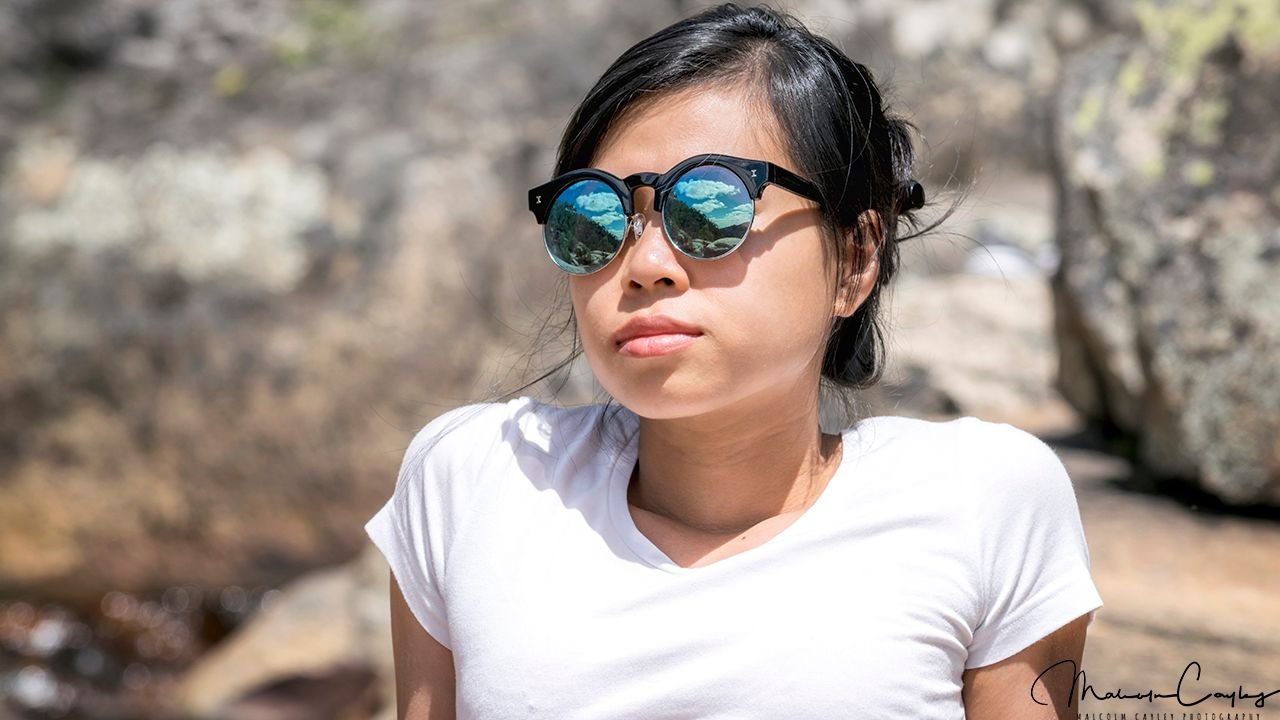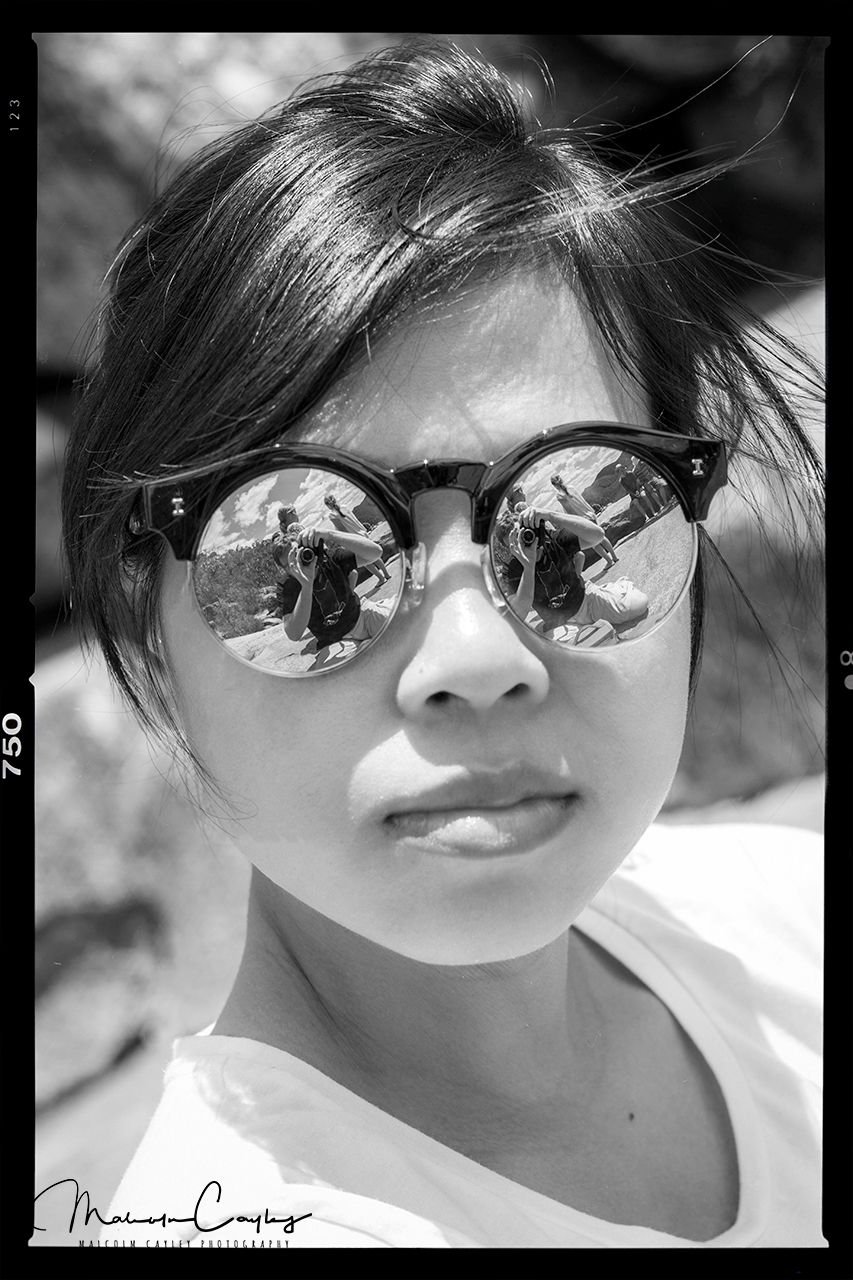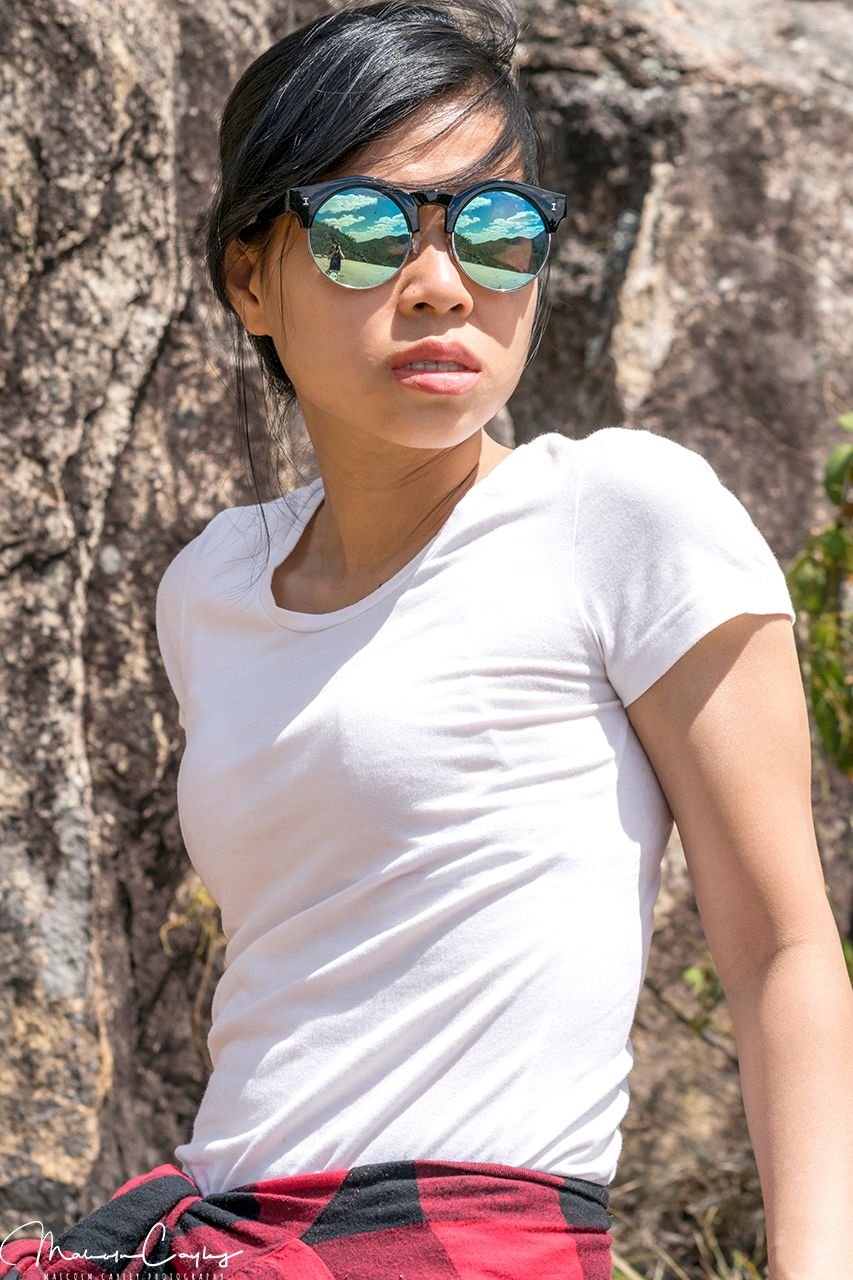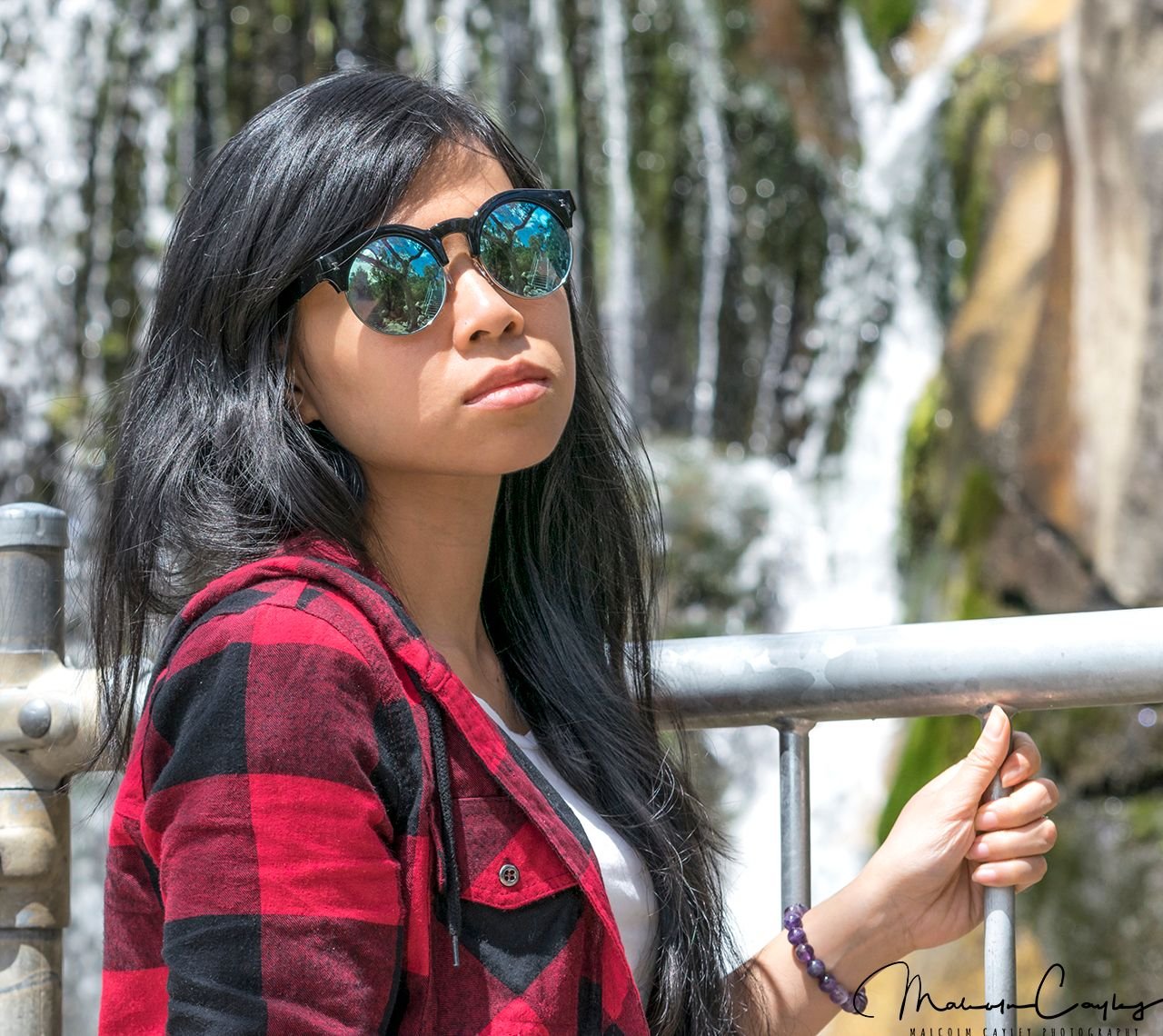Hello Steemians!
I love taking portraits. The elegance of the entire process always enchants me: posing the model, finding the right composition, considering the Depth of Field (DOF), and finding the best quality of the background and the light.

Taking a good portrait is not about your gear (although it doesn’t hurt to have good gear); it’s all about light. Good lighting is the most fundamental element to an awe-inspiring photograph which is further refined by your post-production process. Getting it as good as you can in the camera before taking into Lightroom or Photoshop or whatever is the mark of a competent photographer. On this day at Gibraltar Falls, just outside of Canberra, the light was fairly hard so the contrast between light and shadow was quite high. This contrast was something I later reduced in Lightroom but it's not really something you can entirely eliminate without modifying the light source or using another light source.

Here I am shooting with my D3300 and an old manual lens from the 1960s (Nikkor H 50mm) that I bought from Ebay and had shipped over from Japan. The lens is in really good condition. The manual focus, however, means sometimes you get soft shots but I feel it's part of the charm. Later on, I converted the image to B&W using the RAW (Nikon's NEF) file and Lightroom.

I always prefer to shoot using the native RAW format of the camera and then keep these as backups in addition to converting my edited photos to JPEG. JPEG is lossy which means that every time it is saved again, something which happens in the background of many media platforms as files are transferred all the time, it losses a bit of quality. Over time JPEGs will degrade in quality. PNG format is lossless so it doesn’t suffer from these drawbacks but requires more storage space. A fair compromise I find is to keep the RAW files unedited thanks to Lightroom’s backups and save out JPEGs which I can then post online. Years later if I want to revisit the photos in exactly the same condition as when I originally imported them onto my laptop I can view and edit the RAW files. After every shoot I have the RAW files in one folder and the edited JPEGs in another and the smaller web-sized files in yet another folder. This allows me to return to a photo if I have another idea for a specific look.
Obviously with my entry-level body I have to make compromises with this shooting style: I cannot be trigger-happy because the memory required to process NEF (Nikon's RAW format) is much greater than JPEG. Being selective with the moments you want to capture makes the process much more exciting rather than just holding down your finger and hoping for the best in an awkward blanket approach to photography which gives awful facial expressions.

Same gear again: shooting with the aperture wide open (in this case it would be F2.0) is an easy choice for most portrait work. Learning how your lens reacts at different apertures will improve your portraits. Don't always open it all the way because you want to isolate the subject, make the subject and the environment complete your vision for the image.

PS I've only been taking photos with my DSLR now for about a year so I'm still fairly new and these portraits are kinda old with terrible light. I learned from this shoot to prefer cloudy days because the clouds diffuse the sun light exactly the same way a softbox diffuses (makes it soft) a hard point light source such as a light globe. Don't be turned away by cloudy days because the light looks dull: even light can always be evenly increased by either shooting with a higher exposure or increasing the exposure later on in post (Lightroom etc.).
Thanks for reading :)
